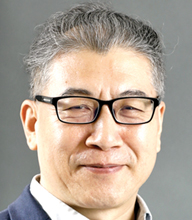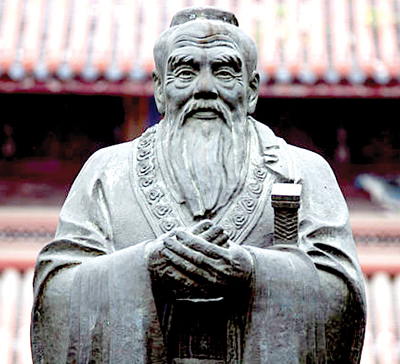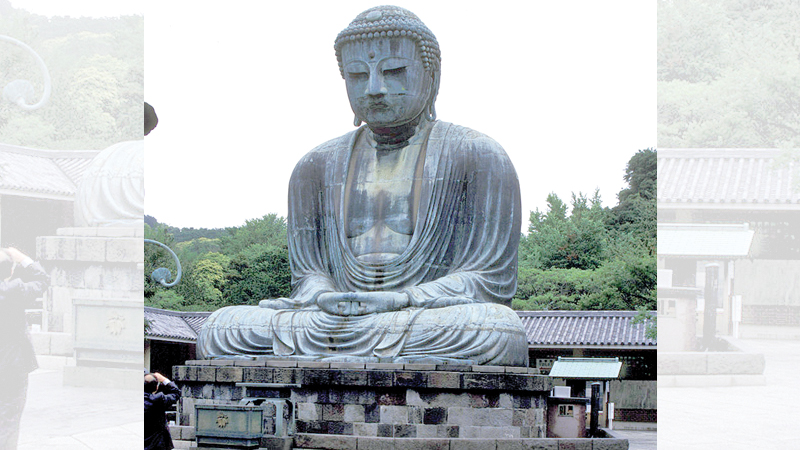In its 2014-2015 issue, the Journal of Buddhist Studies had carried am interesting paper on the “personality of the historical Buddha” by the Chinese scholar, Dr. Guang Xing.
Dr. Guang, who was associated with the School of Oriental and African Studies London, the Centre for Buddhist Studies at the University of Hong Kong, and Keleniya University in Sri Lanka, described the “historical” Buddha or the actual man shorn of the myths woven around him. By all accounts, the Sakya Muni (the sage from the Sakya community) was an extraordinary personality who lived by the precepts he expounded consistently till his last breath at the age of 80.

Dr. Guang Xing
Many scholars have described him as one of the greatest personages in human history as his intuitive wisdom has stood the test of time.
A. Foucher, author of The Beginnings of Buddhist Art said, “Nearly 2500 years after his death, the Buddha’s memory is still very much alive. Apparently, as long as world suffering is to last – and it will last as long as the world – the memory of the great doctor of the soul whose life was spent in trying to find its cure – will persist as a shining light on the horizon”.
The Buddha stood out among other Indian religious personalities of his day because he, unlike others, made a clean break from the well-entrenched past. Ancient Indians were mystic, seeking salvation by contemplation and total surrender to “Mahabrahma” or the Absolute or the Ultimate Reality that is beyond human understanding.
But the historical Buddha was grounded in the harsh realities of the world. He was concerned with the pervasive phenomenon of suffering. He thought out ways to enable people to avoid suffering. His quest was not for a Supreme God, the Other World, or the World of the Spirit, but getting rid of suffering in this world.
Like Confucius
In this respect, the Buddha was like Confucius, Dr. Guang said. Confucius asked one of his disciples – “While you are not able to serve men, how can you serve their spirits?” There is no discussion of Gods or Ghosts or Hell in Confucius’ teachings.
Given the similarity between Confucius and the Buddha, Dr. Guang wonders if the Buddha belonged to the Mongolian race rather than the Aryan as historian Vincent Arthur Smith speculated.
Dr. Guang said that there was nothing “mysterious” or other worldly about the Buddha’s Enlightenment. He had striven for it the hard way using his intellect. What he got was not divine inspiration or a revelation from an Almighty but through an intellectual quest.
Since Siddhartha Gautama attained awakening through human effort, he did not promise divine salvation from suffering or sorrow as a reward of believing in him. In fact, he rejected all forms of a “divined power” and recognised only the “will power” of people.
Buddhist literature rejects the notion that God created the world and man. “If Brahma is the lord of the whole world and creator of the multitude of beings, then why has he ordained misfortune in the world? For what purpose has he made the world full of injustice, deceit, falsehood, and conceit? Is the lord of beings evil in that he ordained injustice when there could have been justice,” the Buddha asked.

Confucius
He totally rejected an almighty power, often comparing himself to a physician and his teachings as medical knowledge. He allowed people to take refuge in him not with the hope of “salvation” but to become a student seeking knowledge to get rid of suffering.
A student seeking Nirvana (a transcendent state in which there is neither suffering, desire, nor sense of self, and the subject is released from the effects of karma and the cycle of death and rebirth) has to battle a number of hindrances or enemies in real life and overcome them.
The Buddha listed these hindrances as – sensual pleasures, discontent, hunger and thirst, craving, sloth and torpor, fear, doubt, hypocrisy and obstinacy. “Thus, what the Buddha fought against was human weaknesses, nothing mysterious. In this description, there is also no external supernatural power involved,” Dr. Guang said.
“The path to liberation prescribed by Gautama Buddha is the noble eight-fold path which is simple and practical, acceptable in every civilised society as a description of the good life. Nothing mysterious or ceremonious is involved in it. On the contrary, what is emphasized are will power and behaviour of the person. The individual is the captain of his own destiny, responsible for all he has done. The Buddha is only a torch bearer to humanity,” Dr.Guang added.
Unlike the other teachers of his day such as Nigaṇṭha Nataputta, the founder of Jainism who claimed omniscience, the Buddha did not make such a claim. In the Tevijjavacchagotta Sutta, the ascetic Vacchagotta approached the Buddha and wished to clarify a report of his omniscience. The Buddha categorically said: “Vaccha, those who say thus do not say what has been said by me, but misrepresent me with what is untrue and contrary to fact.”
In fact, the Buddha’s teachings are based on his own experience not given by some other force or agency.
The Buddha was considered a leader by the Sangha, the community of bhikkhus, and all his disciples came to him for solutions whenever they met a problem in their life and practice. While answering their queries, he discouraged them from building around him a personal cult.
According to the Mahāparinibbāna sutta, just before the Buddha’s death, his disciple Ananda asked him to give final instructions. And the Buddha said – “Ananda, be an island unto yourself, a refuge unto yourself. Seek no external refuge. With the Dhamma as your island, the Dhamma as your refuge, seek no other refuge.”
On another occasion, the Buddha gave a similar piece of advice to the bhikkhus when they thought that they were going to lose their teacher. “Ananda, the Dhamma and Vinaya that have been expounded by me will be your teacher after my death.”
Thus, the Buddha did not appoint any successor to take his role because he never even considered himself to be the “leader” of the Sangha, Dr. Guang asserts.
Room for fresh thinking
The Buddha did not consider his teaching to be the only truth. According to Dr. Guang, this is the reason why Buddhist scriptures kept growing after the Buddha died. “The Buddha considered that attachment to any view is a kind of bondage, an obstacle to right understanding.”
Dr. Guang says that this way of thinking about the teachings of the Buddha is reflected the Sarvastivada school of thought, according to which, “Not all the speeches of the Tathagata (the Buddha) can be regarded as the preaching of the righteous law. The World-Honoured One also utters words which are not in conformity with the truth.”
Dr. Guang adds that the Buddha himself said that there were certain imperfect sutras. “So, in a word, the Buddha did not give any room for his disciples and followers to think that he was either a God or some kind of supreme leader to be worshipped.”
The Buddha foresaw the danger of the transmission of leadership. So, he established a democratic institution so that the Buddhist community could choose their head by means of vote as described in the Vinaya.
Flexible Vinaya
Most religions have rigid rules and regulations. In the Judeo- Christian tradition, the Ten Commandments are claimed to be of divine origin, as God gave them to Moses on Mount Sinai. Violation of these commandments results in punishment from God. Rules of the ancient law-codes of the Hindus such as those of Vasista and those in the Acharaṅga Sutra of the Jains, were propagated through religious sermons. These laws were designed to express the Divine Will.
However, the Buddhist Vinaya rules have no divine origin at all as the lawmaker, the Buddha himself, was not a God. Vinaya rules were laid down gradually as occasions demanded. The Buddha was himself open to suggestions and always considered any request regarding rules from members of the Sangha, never hesitating to revise or amend rules to comply with emerging needs, changes in time, circumstances and environment.
The Buddha’s liberal attitude towards Vinaya and other matters, is one of the reasons why Buddhism successfully spread from India to other parts of Asia and to the rest of the world. Here it would be appropriate to contrast it with Jainism, that also rose in India in the sixth century BC together with Buddhism.
While Jainism is confined to India, Buddhism has spread far and wide. One of the main reasons for this is that the Jains went to the extremes in their practice of non-violence and vegetarianism.
Devadatta, one of the Buddha’s disciples, was not happy about the master’s liberal attitude. But the Buddha did not object to Devadatta’s way of thinking and allowed him to follow his own version of the Vinaya. He wanted Devadatta to find out for himself if austere ascetic practices would lead to liberation. According to Dr. Guang, Devadatta’s followers survived only until the late seventh century AD.
The Buddha did not want to make any language the only “sacred” one. He felt that it would limit his teachings’ spread. Dr. Duang quotes Vinaya Mataka Sutra which says, “The Buddha told the bhikkhus that my teaching’s emphasis is not laid on rhetoric. What I mean is that the doctrines should not be misunderstood. They should be taught in any language which is understood by the people, according to their suitability. This is named as teaching according to the locality”.
The Buddha did not like to use magic, but educational instruction. As Ven. Walpola Rahula said, many miraculous powers were attributed to the Buddha. However, most of the miracles mentioned in sūtras and vinaya took place in his early life following his Enlightenment. He changed his attitude to miracles later and did not consider magical powers to be of primary importance.
The Buddha said that there are three kinds of miracles: the mystic wonder, the wonder of thought reading, and the wonder of education. Amongst the three, he liked the wonder of education most, because education would directly appeal to the listeners’ mind. Listeners will be convinced through understanding and not by faith.









